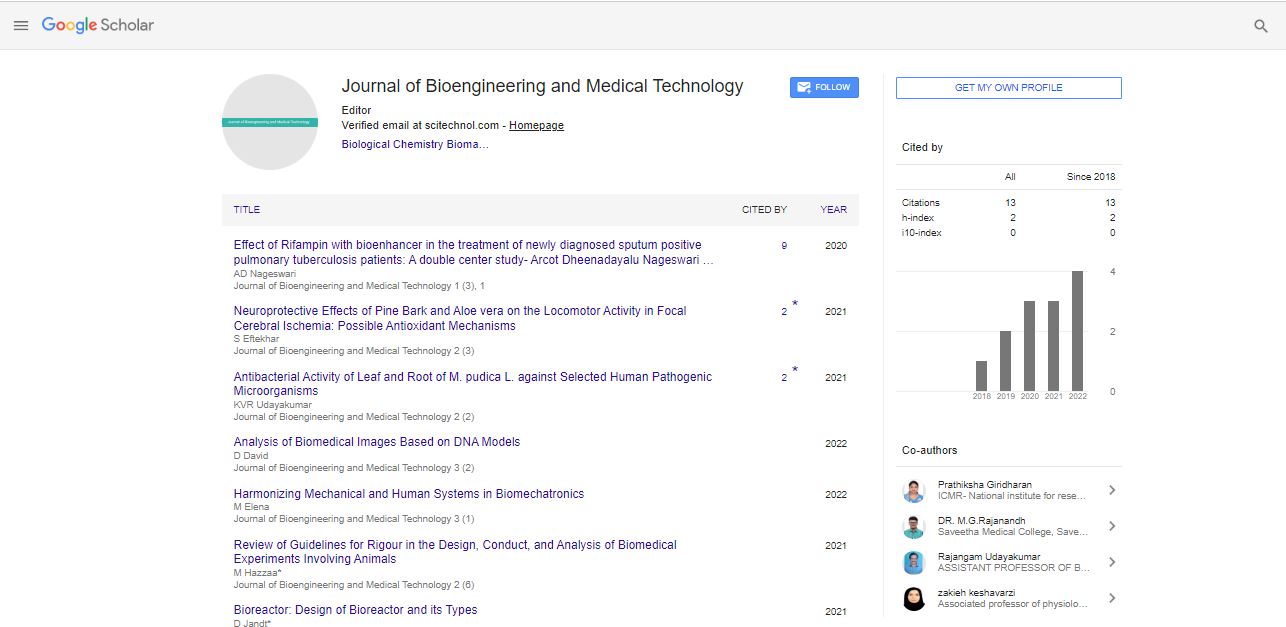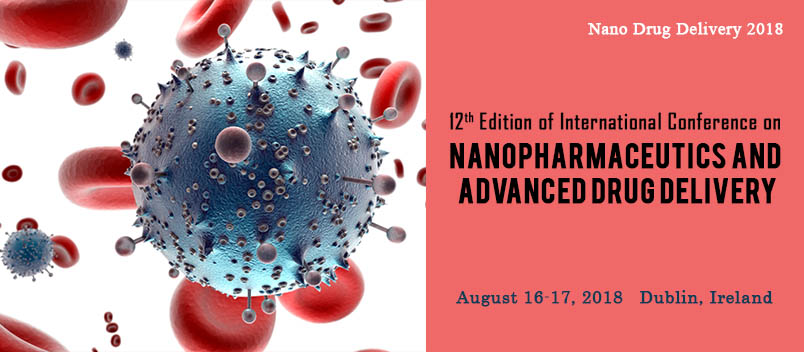Opinion Article, J Bioeng Med Technol Vol: 4 Issue: 2
Emerging Trends in Biomedical Imaging and Diagnostic Techniques
Roderick Tung*
1Department of Biomedical Engineering, ETH Zurich, Zurich, Switzerland
*Corresponding Author: Roderick Tung,
Department of Biomedical Engineering,
ETH Zurich, Zurich, Switzerland
E-mail: rederuck@5264.edu
Received date: 22 May, 2023, Manuscript No. JBMT-23-107422;
Editor assigned date: 24 May, 2023, Pre QC. JBMT-23-107422 (PQ);
Reviewed date: 15 June, 2023, QC No. JBMT-23-107422;
Revised date: 22 June, 2023, Manuscript No. JBMT-23-107422 (R);
Published date: 29 June, 2023, DOI: 10.35248/jbmt.1000074
Citation: Tung R (2023) Emerging Trends in Biomedical Imaging and Diagnostic Techniques. J Bioeng Med Technol 4:2.
Description
Biomedical imaging and diagnostic techniques plays a vital role in modern medicine, enabling early detection, accurate diagnosis, and personalized treatment. In recent years, there have been significant advancements in this field, driven by technological innovations and the integration of Artificial Intelligence (AI). This explores the emerging trends in biomedical imaging and diagnostic techniques, encompassing various modalities such as medical imaging, molecular imaging, and point-of-care diagnostics, by discussing the potential impact of these trends on improving patient care, disease management, and future challenges that analysts and clinicians may face.
Biomedical imaging and diagnostic techniques have transformed the landscape of medical care, enabling clinicians to visualize internal structures, assess organ function, and identify pathological conditions. Recent developments in imaging technologies and diagnostic methodologies have revolutionized medical diagnosis, treatment planning, and patient outcomes, with recent emerging trends in biomedical imaging and diagnostics, with a focus on novel techniques and their potential applications.
AI-driven medical imaging
Artificial Intelligence (AI) has become a driving force in biomedical imaging, enhancing the accuracy and efficiency of diagnosis. Machine learning algorithms, particularly deep learning, have enabled automated image analysis, pattern recognition, and risk prediction. AI-driven medical imaging techniques hold immense potential in areas such as radiology, pathology, and cardiology. Furthermore, AI-integrated imaging devices can aid in the early detection of diseases, thus improving patient outcomes and reducing healthcare costs.
Molecular imaging
Molecular imaging techniques allow the visualization and analysis of molecular events within living organisms. Positron Emission Tomography (PET), Single-Photon Emission Computed Tomography (SPECT), and Magnetic Resonance Spectroscopy (MRS) are examples of molecular imaging modalities. These techniques provide invaluable insights into cellular processes, disease progression, and the efficacy of therapeutic interventions. The integration of molecular imaging with targeted contrast agents and biomarkers offers a potential route for precision medicine and personalized treatment strategies.
Point-of-care diagnostics
Point-of-Care (POC) diagnostics refers to medical testing at or near the site of patient care, providing rapid results for immediate decisionmaking. Recent advances in POC devices have democratized healthcare by expanding access to diagnostics in resource-limited settings. Portable, handheld devices capable of detecting infectious diseases, chronic conditions, and biomarkers have shown significant potential in improving global health outcomes. Additionally, the integration of smartphone-based applications with diagnostic tools has further streamlined data collection and remote monitoring.
Multimodal imaging
The integration of multiple imaging modalities has emerged as a powerful approach in biomedical imaging. Combining the strengths of various techniques, such as PET-CT, PET-MRI, and SPECT-CT, enables comprehensive anatomical and functional information. Multimodal imaging enhances diagnostic accuracy, facilitates treatment planning, and offers a deeper understanding of disease processes. As technology advances, further development and standardization of multimodal imaging approaches will be important for their widespread clinical adoption.
Imaging nanotechnology
Nanotechnology has revolutionized biomedical imaging by enabling the development of novel contrast agents and imaging probes. Nanoparticles, quantum dots, and nanosensors exhibit unique properties that can enhance imaging sensitivity and specificity. Additionally, nanotechnology-based therapeutic agents can be integrated into imaging platforms for theranostic applications, combining diagnostics and treatment in a single system. The use of imaging nanotechnology provides enormous potential in targeted drug delivery, early cancer detection, and real-time monitoring of treatment response.
Challenges and future perspectives
Despite the remarkable progress in biomedical imaging and diagnostic techniques, several challenges remain. Standardization of protocols, data privacy concerns, and the ethical use of AI are important areas that require attention. Furthermore, the integration of emerging technologies into routine clinical practice necessitates robust validation and regulatory approval. Future analysis should focus on refining AI algorithms, optimizing molecular imaging probes, and developing cost-effective POC devices to ensure equitable access to cutting-edge diagnostics globally.
Conclusion
The field of biomedical imaging and diagnostic techniques is continuously evolving, with favorable trends and advancements on the horizon. AI-driven medical imaging, molecular imaging, point-of-care diagnostics, multimodal imaging, and imaging nanotechnology are poised to revolutionize healthcare delivery, leading to early detection, accurate diagnosis, and personalized treatment. Collaborations between analysts, clinicians, and industry stakeholders will be instrumental in driving these innovations from the laboratory to clinical settings, ultimately benefiting patients worldwide. As technology continues to advance, it is important to remain vigilant in addressing challenges and ethical considerations to harness the full potential of emerging trends in biomedical imaging and diagnostics.
 Spanish
Spanish  Chinese
Chinese  Russian
Russian  German
German  French
French  Japanese
Japanese  Portuguese
Portuguese  Hindi
Hindi 
